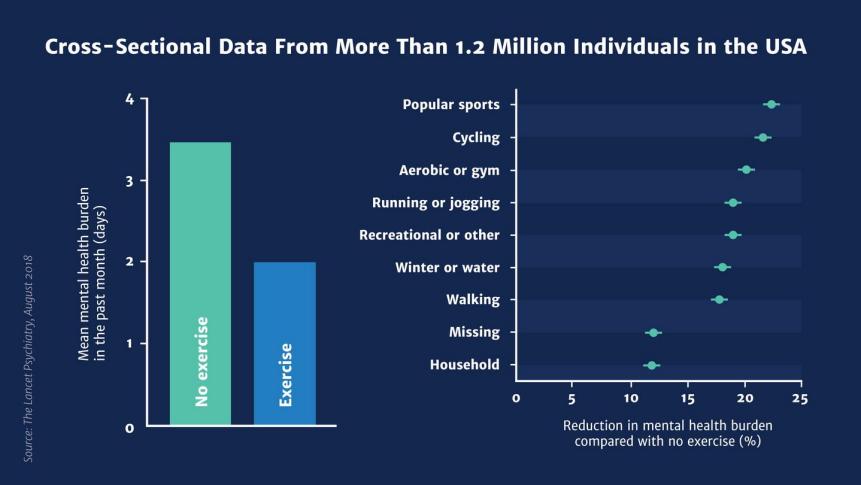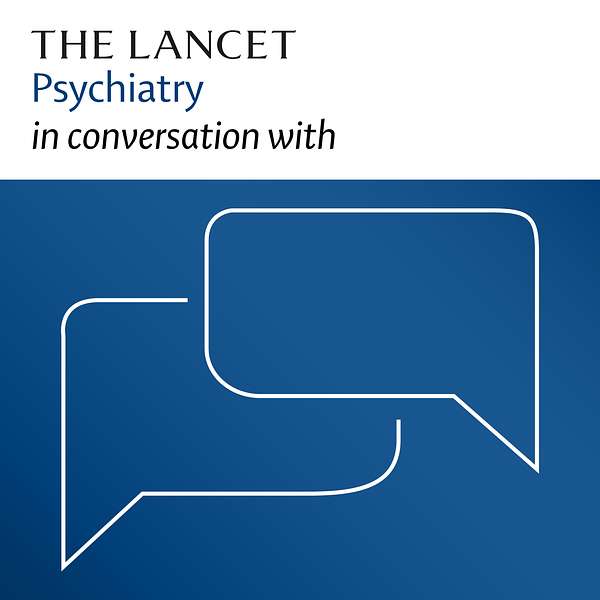Regular exercise reduces depression and anxiety, as shown in Lancet Psychiatry studies.
If you’re curious about lancet psychiatry exercise for mental health, you’re in the right place. I’ve spent years guiding people to move for mood. In this deep dive, I’ll break down what the research shows, why exercise helps, and how to make it work in real life. We’ll keep it simple, practical, and evidence-based so you can trust every step.

What the research really shows
The strongest signal comes from a landmark analysis of over a million adults in the United States. People who exercised reported about 1.5 fewer days of poor mental health each month. That equals roughly a 40 percent reduction compared with people who did not exercise.
The best outcomes linked to team sports, cycling, running, and gym workouts. Sessions near 45 minutes, 3 to 5 times per week, looked ideal. Longer sessions or very high frequency linked to smaller gains. This suggests a sweet spot.
Meta-analyses back this up. Exercise leads to small to moderate improvements in depression and anxiety. It often works as well as common first-line options for mild cases. It also boosts sleep and stress recovery. For moderate to severe symptoms, exercise works best as an add-on to care.
There are limits. These studies are not perfect. Many are observational. That means we must be careful with cause and effect. Still, the pattern is clear and consistent across age groups.
If you search for lancet psychiatry exercise for mental health, you’ll see this theme often. The message is steady: move more, feel better. The lancet psychiatry exercise for mental health evidence is strong, and it supports practical action now.

Why movement helps your brain
Exercise changes your brain chemistry in helpful ways. It raises BDNF, which supports brain plasticity. It reduces chronic inflammation and helps your stress system reset.
It also works on mood through simple wins. You set a plan. You follow through. You feel capable again. This sense of control is a big deal in low mood. For anxiety, rhythmic movement and breath calm the body.
Social movement adds another layer. Team sports and group classes bring support and fun. Both matter when you feel alone. This is why lancet psychiatry exercise for mental health often highlights group-based activity as a top choice.
30227-X/asset/918ebf7f-0f1a-4110-8ad0-cfd55605b5f8/main.assets/gr1_lrg.jpg)
How much and what kind of exercise helps
Think FITT: frequency, intensity, time, type.
- Frequency: Aim for 3 to 5 days per week. Two is a start.
- Intensity: Start light to moderate. You should be able to talk.
- Time: 30 to 45 minutes per session. Shorter bouts add up.
- Type: Walking, cycling, jogging, swimming, dance, strength, yoga.
For general health, 150 minutes of moderate activity per week is a solid target. Add strength training on 2 days. For anxiety, try steady and rhythmic moves with slow breathing. For low mood, get out the door with a simple walk plan. Try daylight if you can.
If you have bipolar disorder, very intense exercise can sometimes feel revving. Keep it steady, and check in with your clinician. The lancet psychiatry exercise for mental health guidance suggests staying near that 45-minute sweet spot.

Step-by-step plans you can use this week
Plan A: 20-minute brisk walking starter
- Day 1: Walk 10 minutes out, 10 minutes back.
- Day 3: Repeat and add 2 minutes.
- Day 5: Repeat and notice your mood before and after.
Plan B: 30-minute ride or swim mix
- Warm up 5 minutes easy.
- 20 minutes steady, talkable effort.
- Cool down 5 minutes.
Plan C: Strength and mood in 25 minutes
- 5 bodyweight moves, 45 seconds on, 30 seconds rest.
- Squats, push-ups (on knees if needed), rows with a band, glute bridges, dead bugs.
- Do 2 rounds. Finish with 3 minutes of slow breathing.
Plan D: Calm anxiety yoga, 15 minutes
- Cat-cow, child’s pose, forward fold, legs up the wall.
- Slow nasal breathing in and out through 4 counts.
Pick one plan and repeat it this week. Build from there. Put it on the calendar. Make it simple and steady. This is how you apply lancet psychiatry exercise for mental health in daily life.
30227-X/asset/76c9b5b0-6fac-42c1-b726-b148d0483c4c/main.assets/gr3_lrg.jpg)
Tips from practice and mistakes to avoid
Start easy. I’ve seen many people jump in hard and fade fast. The win is to build a streak, not to set a record.
Make it fun. Choose music you love. Go with a friend. Track your mood right after you move. This boosts motivation.
Avoid these common traps:
- Going from zero to daily high-intensity sessions.
- Skipping sleep and then blaming exercise.
- Using exercise as punishment.
- Comparing your start to someone else’s middle.
- Not planning for bad weather or busy days.
When I coach, we focus on identity: I am a person who moves for my mind. That line sticks. It keeps you aligned with lancet psychiatry exercise for mental health without pressure.

Special groups and safety
Talk with your clinician if you have heart issues, severe symptoms, or new pain. Safety comes first. Start small, check how you feel, and adjust.
- Pregnancy and postpartum: Walking, prenatal yoga, and light strength are safe for many. Get clearance if needed.
- Older adults: Balance and strength matter. Chair exercises and short walks work well.
- Chronic pain: Use pacing. Gentle water work can help.
- PTSD: Try predictable routes and times. Avoid crowded spaces at first.
- Bipolar disorder: Keep intensity moderate and routine steady.
Some drugs affect heart rate or heat tolerance. Hydrate well. Stop if dizzy, faint, or with chest pain. The goal of lancet psychiatry exercise for mental health is to help, not to push through red flags.
30227-X/asset/f08aa691-7890-4e57-aba8-4851f12c9387/main.assets/gr2_lrg.jpg)
Tracking progress and staying motivated
What you measure improves. Keep it light and useful.
- Mood check: Before and after each session, rate mood from 1 to 5.
- Sleep: Note time to fall asleep and sleep quality.
- Stress: Use a quick 1 to 5 stress rating.
- Function: Count “good mental health days” each month.
Use simple tools. A phone note. A calendar. A wearable if you like. Plan with if-then cues. If it rains, then I do a 15-minute YouTube workout. Share your plan with a buddy. This is the heartbeat of lancet psychiatry exercise for mental health in real life.

Myths and nuances
Myth: You must run long and hard. Truth: Short and steady works.
Myth: Exercise cures all mental illness. Truth: It helps, and it pairs well with care.
Myth: No pain, no gain. Truth: For mood, comfort wins.
You can adjust the dose. If anxiety spikes with sprints, slow down. If you feel flat, add music or a friend. Overtraining can backfire. Rest days are part of the plan. These tweaks fit the evidence on lancet psychiatry exercise for mental health.
00069-5/asset/fd669cf6-a0ff-481d-858d-e68c00d36ae9/main.assets/gr1_lrg.jpg)
Frequently Asked Questions of lancet psychiatry exercise for mental health
What did the big Lancet Psychiatry study actually find?
People who exercised reported fewer poor mental health days per month. The best range was about 45 minutes, 3 to 5 times per week.
Does exercise work as well as therapy or medication?
For mild to moderate symptoms, exercise can help as much as common first-line options. For stronger symptoms, it works best alongside therapy or medication.
Which exercise is best for depression and anxiety?
Team sports, cycling, running, and gym workouts show strong links. Walking and yoga also help and are easier to start.
How fast will I feel better?
Some people notice a lift after one session. Most see steady change over 2 to 6 weeks with regular practice.
Can I overdo it and feel worse?
Yes. Very long or very frequent sessions can raise stress. Aim for that steady middle, and watch how you feel the next day.
How do I start if I have low energy?
Begin with 10 minutes of easy walking. Pair it with music or sunlight. Build one minute at a time.
Conclusion
Exercise is a simple, powerful tool for your mind. The research points to steady, doable movement as a real mood booster. You do not need perfect gear or long workouts. You need small steps, often.
Pick one plan today. Schedule it. Track your mood. If symptoms are heavy, loop in your clinician and use exercise as part of your care. Want more guides like this on lancet psychiatry exercise for mental health and practical routines? Subscribe, share your wins, or drop a question in the comments.





